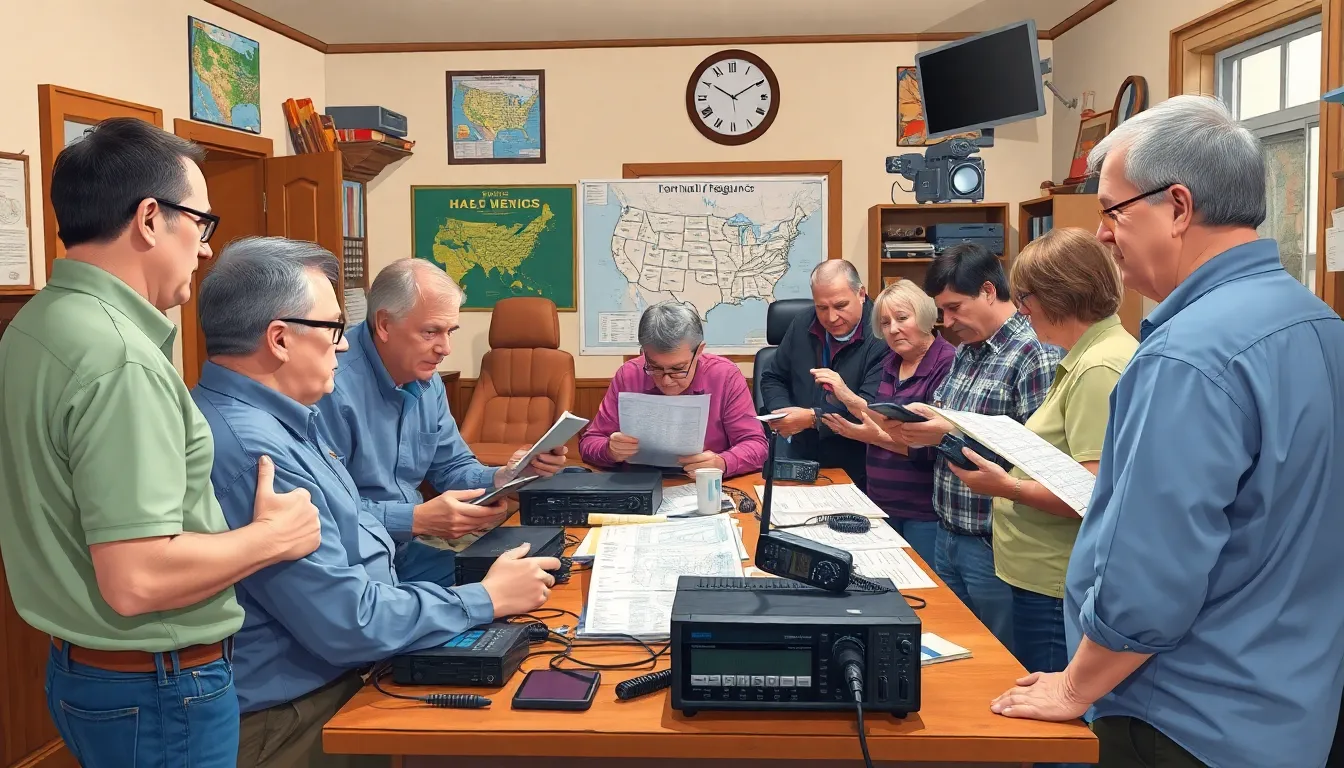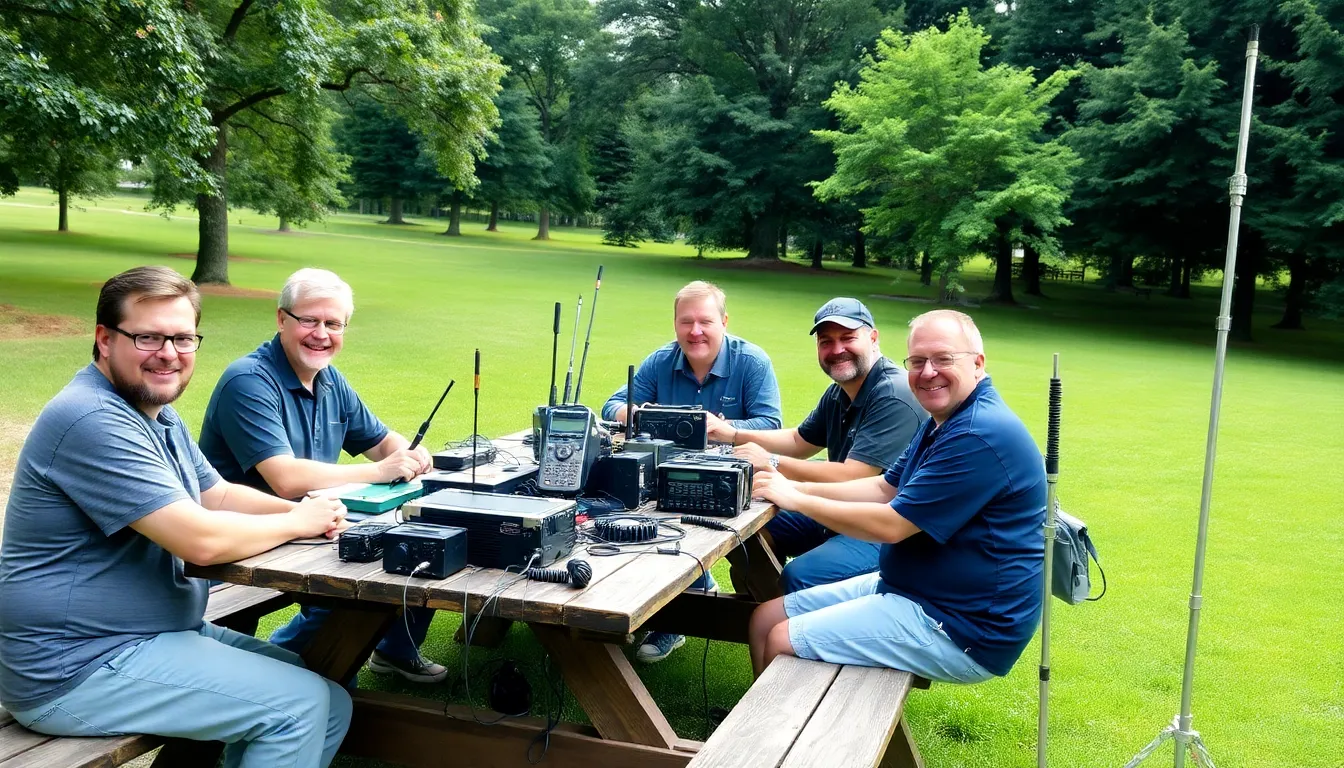In a world buzzing with digital chatter, ham radio stands out as a timeless classic. It’s not just about tuning into frequencies; it’s about connecting with fellow enthusiasts who share a passion for communication. Imagine chatting with someone across the globe or just down the street—all without a smartphone in sight. Sounds like magic, right?
Table of Contents
ToggleUnderstanding Ham Radio Frequencies
Ham radio frequencies encompass a range of radio wave bands used by amateur radio operators. These frequencies allow users to communicate over varying distances, making connections with local, national, and international peers.
What Are Ham Radio Frequencies?
Ham radio frequencies consist of designated bands allocated for amateur radio use. Frequencies span from very low frequencies (VLF) to ultrahigh frequencies (UHF), typically ranging from 1.8 MHz to 1 GHz. Each band supports different communication modes, including voice, digital, and Morse code. For instance, the 2-meter band (144-148 MHz) is popular for local communication, while the 20-meter band (14.000-14.350 MHz) is favorable for long-distance contacts.
Importance of Local Frequencies
Local frequencies play a crucial role for amateur radio operators. Utilizing local channels enhances communication efficiency within communities. Operators can share information during emergencies, join regional nets, and participate in community events. Additionally, local frequency usage contributes to building a network of fellow enthusiasts, fostering camaraderie, and promoting engagement in ham radio activities.
Finding Ham Radio Frequencies Near Me

Locating ham radio frequencies in your area enhances communication. Several resources facilitate this search.
Online Resources and Directories
Many websites provide databases of ham radio frequencies. Websites like QRZ.com and ARRL.org offer searchable directories, making it easy for operators to find local and regional frequencies. These platforms often include user-generated content, supporting real-time updates on active frequencies. Additionally, apps like HamFinder utilize GPS technology to display frequencies that other local operators frequently use. An online frequency chart simplifies access to details about bands, modes, and usage times.
Local Clubs and Communities
Joining local clubs enriches the ham radio experience. Amateur radio clubs frequently host workshops, offering newcomers hands-on insights into operation and equipment. Clubs often maintain lists of active frequencies and can provide tailored advice based on the community’s unique needs. Some clubs even organize events to encourage on-air activity, helping operators build connections and share knowledge. Engaging with fellow enthusiasts fosters a supportive network dedicated to enhancing amateur radio skills and knowledge.
Popular Ham Radio Frequencies in My Area
Local ham radio frequencies play a key role in connecting amateur operators. Understanding these frequencies can enhance communication and build community ties.
VHF Frequencies
VHF frequencies typically range from 30 MHz to 300 MHz. Many operators utilize these frequencies for local communications and emergency coordination. Common VHF simplex frequencies include 146.520 MHz, frequently used for general calling. Repeaters operating in the VHF band often enhance range, allowing operators to connect over longer distances. Local amateur radio clubs often maintain lists of active VHF repeaters, which can be found on websites like ARRL.org. Participating in local net operations, often scheduled on VHF frequencies, encourages engagement and information sharing within the community.
UHF Frequencies
UHF frequencies operate within the 300 MHz to 3 GHz range. Many amateur radio operators prefer UHF for its ability to provide clearer signals in urban environments. A popular UHF frequency for simplex communication is 446.000 MHz. Repeater systems also thrive in this frequency range, facilitating broader communication across towns and cities. Resources such as QRZ.com offer information on local UHF repeaters, making it easier to stay connected. Joining local nets or events can help operators familiarize themselves with UHF frequencies, creating opportunities for effective communication and collaboration.
How to Tune into Local Frequencies
Tuning into local ham radio frequencies enhances communication with nearby operators. Several elements contribute to a successful tuning experience.
Equipment Needed
Transceivers play a crucial role in ham radio operation, serving as the main device for transmitting and receiving signals. Antennas significantly impact range; selecting the right type ensures clear communication. A reliable power supply maintains consistent operation of equipment. Include headsets for clear audio during conversations. Finally, a frequency scanner simplifies the process of locating active channels in the area.
Step-by-Step Tuning Guide
Begin by selecting the appropriate band for local communication. VHF and UHF often work best for nearby operators. Check local frequency directories or apps like HamFinder to identify frequently used frequencies in the area. Input the desired frequency into the transceiver, ensuring it’s properly set for operation. Listen for transmissions to verify the frequency’s activity. Adjust the squelch control to eliminate unwanted noise, ensuring clearer reception. Engage with local nets or clubs to establish connections and improve tuning familiarity.
Exploring ham radio frequencies opens up a world of communication possibilities. Whether it’s connecting with local operators or engaging in emergency coordination, the benefits of being part of the ham radio community are undeniable. With the right tools and resources, anyone can tune in and participate in this vibrant network.
Local amateur radio clubs play a crucial role in fostering connections among enthusiasts while providing valuable support and knowledge. By utilizing online directories and apps, operators can easily find and engage with the frequencies that matter most in their area. Embracing this unique form of communication not only enhances personal skills but also strengthens community ties.




